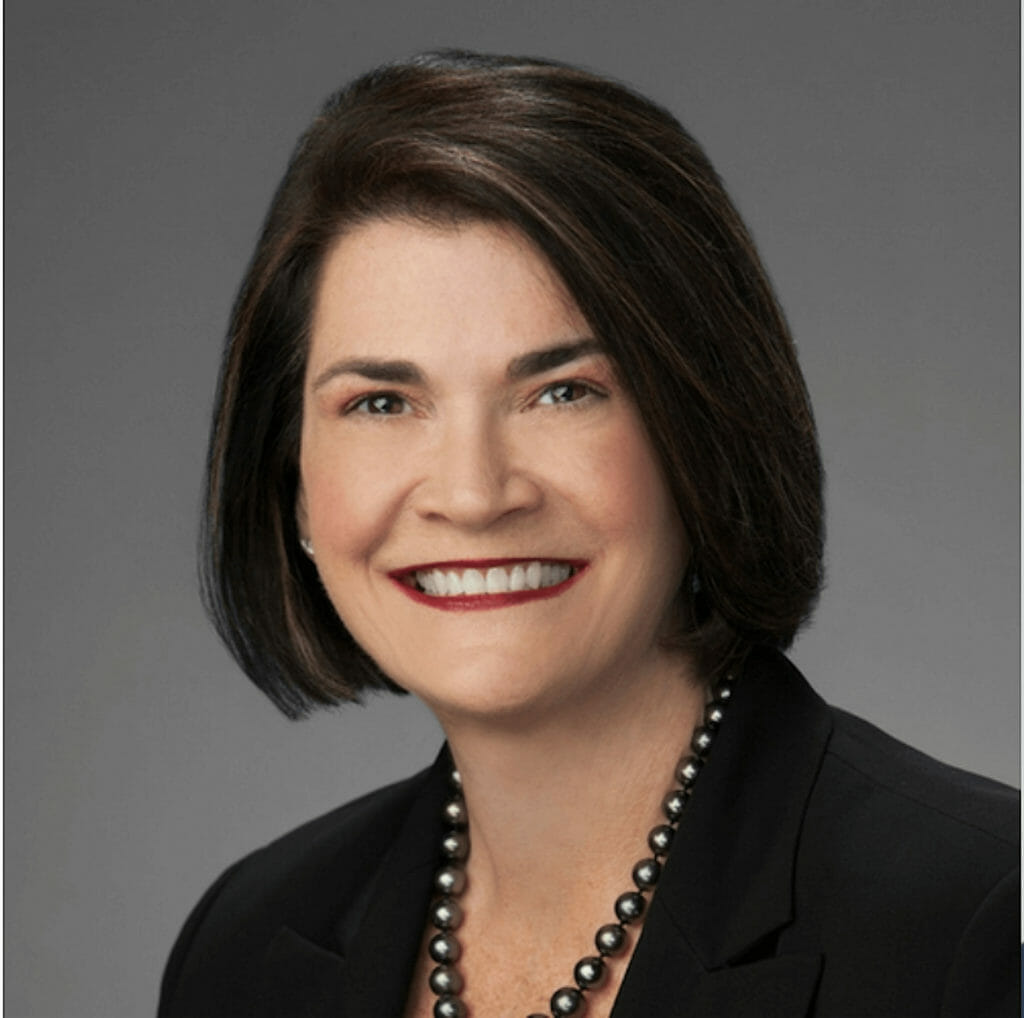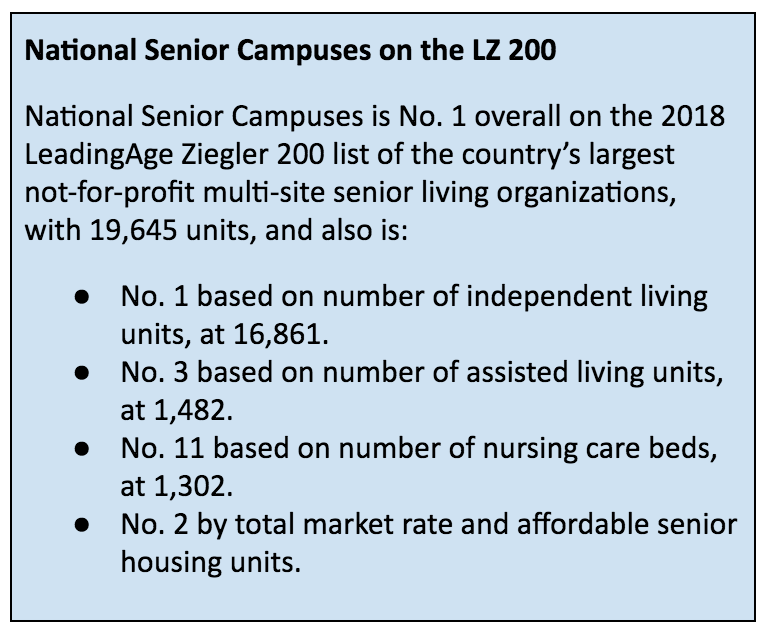
Increasing diversity among residents and staff, upgrading technology and collaborating on civic issues with residents of the greater community are the main goals that Michelle Bohreer has identified for National Senior Campuses as she prepares to become the first woman to lead the board of directors of the country’s largest not-for-profit multi-site senior living organization on Monday.
And a new model of senior living for the company may be in the future.
Three men preceded her in chairing the board of the Catonsville, MD-based company, which was founded 20 years ago and has $4 billion in assets, including real property and investment capital.
Bohreer, a partner in the law firm of Bohreer & Zucker and a licensed certified public accountant, is no stranger to the organization. She comes to her new role after having served since 2014 as corporate secretary of the board, which among other duties oversees management company Erickson Living Management, which has staffing and service agreements with each of NSC’s 16 affiliated continuing care retirement communities. She also has been an independent director for two NSC communities in Texas — Highland Springs in Dallas and Eagle’s Trace in her hometown of Houston — since 2011.

“ ‘Different’ makes us better”
NSC, as does the senior living industry as a whole, sees staffing as one of its biggest challenges, Bohreer told McKnight’s Senior Living.
“We are in a low-unemployment economy right now, and we want the very best people working in our communities, and that creates a challenge to make sure that we have the resources to bring in the best people,” she said.
NSC, Bohreer said, is able to attract diverse talent. “We want to keep that at the fore,” she said. “We never want to lose sight of the fact that ‘different’ makes us better. It makes us better with employees and it makes us better with our residents.”
Attracting a mix of residents who reflect the greater community sometimes has been more difficult, Bohreer said.
“For example, Houston, which is my home, has a large Hispanic population, but our current community doesn’t mirror that, and we want to make some effort and put some marketing initiatives into the Hispanic community to increase our reach in that area,” she said. “Same with the Indian population and the Asian population as well as LGBTQ. We want to be representative of the communities that our communities ‘live’ in.”
Moving toward a ‘smart home’
Part of the motivation for her technology-related goal for NSC is attracting older baby boomers, Bohreer said, but the use of virtual assistant devices such as Alexa, as well as apps and other technology, has the potential to increase connectivity, safety and convenience for all residents.
“We really want to go toward a ‘smart home,’ so when a resident walks in their apartment, they can control their apartment through the use of their voice and the usage of technology” — for instance, to control lights and appliances, she said.
“One of the things at HackFest at LeadingAge we learned about was an app that lets a resident scan the groceries that go into the refrigerator so they are alerted when things are out of date or coming close to out of date,” Bohreer said. “We want to make those types of things available to our residents.”
Residents already can access an app called My Erickson through their iPhones and iPads to view menus, activity calendars and transit schedules, she said. “We want to integrate that with third-party vendors so from the touch of a button in your apartment or on your phone you could call Lyft or Uber, or you could arrange for food delivery,” Bohreer said. “We’re going to be working on those types of applications going forward.”
Being better community partners
The new chair also plans to strengthen and expand on NSC’s current sustainability initiatives in collaboration with the greater community.
“We want to be better community partners,” she said. “So if we’re living in a town that has a water shortage, for example, we want to be mindful that our community recognizes the shortage as well and we do what we can to conserve water.”
Current efforts at NSC CCRCs include energy conservation and recycling and reusing initiatives, Bohreer said.
“Every one of our communities has something called the Treasure Chest. Residents who decide they don’t want a certain couch, a certain piece of jewelry or another item, either when they’re moving in or when they’re redecorating — we resell that, and that money goes back into our resident care fund and into our student scholarships,” she said. “We want to continue that within all of our communities, so that we’re not just throwing things away. We are recognizing the value of reusing.”
Middle-market options
And at a time when much attention is being paid to the need for middle-market senior housing — with the results of the National Investment Center for Seniors Housing & Care’s highly anticipated study to be released April 24 by Health Affairs — Bohreer said she is proud that NSC already works to serve that market within the overall market.
“We review the market data analysis of average home prices in our community and within a 35-mile radius of our community,” she said. “We look at average incomes within our communities, and to the extent that we can find it, savings rates within our communities, to make sure that we fit an affordable and a middle-income option for people.”
A new, multigenerational model?
Ultimately, Bohreer also envisions NSC communities as simultaneously serving multiple generations.
“It likely would be a new model, but it’s something that is really attractive to our board, and we just would have to see how it fits,” she said. “We started out small and have grown to large communities … and one day I could see the community itself growing around our CCRC to include multi generations. It could include retail, to actually have a little town within our walls.”
NSC already has seen the appeal of various generations interacting, Bohreer said.
“We see in our communities the excitement in the faces of our residents and in the faces of the high school students that we bring in to work on our campuses, and that interaction is priceless,” she said. “We know already that that multigenerational approach works to invigorate and provide a needed resource, so why not expand it to provide a housing opportunity at some point as well?”
For Bohreer, however, the immediate future will see her devoting 50 to 70 hours or more per month to her new role, she said, if previous chairs are any indication.
“I enjoy being in our communities and engaging with residents and staff so much that I may spend a little more time so I keep in communication with our communities,” she said.



